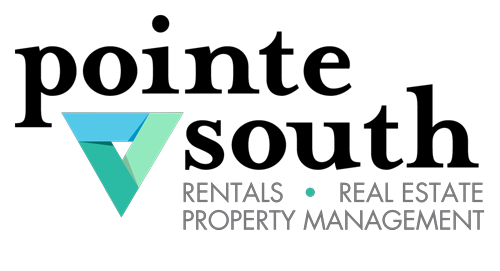In this captivating blog, we embark on a journey through the decades, exploring the wild and wonderful trends that shaped the world of home building from the 1920s to the 1990s. From Art Deco marvels to psychedelic experiments, each era had its own unique flavor and eccentricities that left an indelible mark on the architecture of the time.
As the world recovered from the ravages of war in the 1940s, a renewed sense of optimism emerged, and architects experimented with innovative materials and designs, leading to the advent of mid-century modernism.
Fast forward to the 1950s, an era defined by post-war prosperity and the rise of the American Dream. Suburban living became the norm, and the cookie-cutter ranch-style homes took center stage. However, the 1960s ushered in a cultural revolution that extended to the realm of home building. The counterculture movement, with its emphasis on individuality and self-expression, gave birth to bold and unconventional architectural experiments. The 1970s, with its flamboyant spirit and penchant for excess, witnessed the rise of disco-inspired homes and earthy, nature-centric designs. Finally, the 1980s and 1990s brought about a blend of nostalgia and futuristic aspirations, resulting in a fusion of postmodernism and high-tech influences.
Join us on this exciting journey as we delve into each decade, exploring the wildest and most memorable home building trends that captivated the imaginations of architects and homeowners alike. From audacious color schemes to daring structural innovations, we will uncover the untold stories behind these eccentric trends and how they shaped the way we view homes today. Get ready to be inspired, amused, and perhaps a little perplexed as we traverse the spectrum of home building trends from the quirky to the trendsetting. Let the time-travel begin!
So, come along on this extraordinary voyage through the decades, as we unravel the tales of architectural marvels and whimsical trends that have shaped our built environment and continue to inspire the wild and limitless possibilities of the future.
1920s: The Roaring Flair: The 1920s, known as the “Roaring Twenties,” embraced opulence and extravagance. Architectural trends reflected this newfound spirit of indulgence, giving rise to grandiose mansions and glamorous Art Deco designs. Homes of this era showcased elaborate facades, geometric patterns, and vibrant color schemes. Think grand entrances, ornate molding, and daring design elements that exuded the energy and glamour of the Jazz Age.
1930s: Streamline Moderne: As the world emerged from the Great Depression, the 1930s brought a shift towards streamlined and futuristic designs prompting a more modest approach to home building. The Streamline Moderne style emphasized sleek lines, rounded edges, and a focus on functionality. Homes of this era often featured curved walls, porthole windows, and nautical-inspired details, mirroring the popularity of streamlined transportation.
1940s: Quaint Bungalow Charm :As the world recovered from the ravages of war in the 1940s, a renewed sense of optimism emerged. Simplicity and functionality took center stage. Bungalow-style homes became popular, emphasizing cozy, single-story designs with practical layouts. These homes often boasted charming front porches, cozy fireplaces, and built-in cabinetry, providing a warm and inviting atmosphere for families. Midcentury designers turned their attention to household storage and family rooms.
1950s: Atomic Age Fascination
Fast forward to the 1950s, an era defined by post-war prosperity and the rise of the American Dream. Suburban living became the norm, and the cookie-cutter ranch-style homes took center stage. Homes of the 1950s embraced the Atomic Age aesthetic, with innovative materials like Formica and plastic, coupled with space-age designs. Think bubble-shaped windows, boomerang countertops, and spaceship-inspired furniture that captured the spirit of the space race.
1960s: Groovy Mid-Century Modern
However, the 1960s ushered in a cultural revolution that extended to the realm of home building. The counterculture movement, with its emphasis on individuality and self-expression, gave birth to bold and unconventional architectural experiments. The 1960s introduced the iconic Mid-Century Modern style, characterized by clean lines, open floor plans, and a seamless connection between indoor and outdoor spaces. Homes featured large windows, flat roofs, and organic materials like wood and stone. This era gave rise to iconic designs by architects such as Frank Lloyd Wright and Eero Saarinen.
1970s: Earthy and Eclectic
The 1970s, with its flamboyant spirit and penchant for excess, embraced a more bohemian and eclectic approach to home building. Earthy tones, shag carpets, and wood paneling were all the rage. Avocado green appliances and funky wallpaper patterns adorned kitchens, while sunken living rooms and conversation pits provided a cozy and communal atmosphere.
1980s: Excessive Glamour
The 1980s epitomized excess and grandeur. McMansions with oversized architecture, soaring ceilings, and intricate detailing were in vogue. Flashy and ostentatious elements such as marble floors, mirrored walls, and brass fixtures were commonplace. This era represented a departure from the understated elegance of previous decades and introduced graphic prints, chintzy florals and frills, glass block walls, and Miami Vice-style living rooms.
1990s: Minimalist Simplicity
In stark contrast to the flamboyance of the 1980s, the 1990s embraced minimalist design with the Deconstructivist movement. Clean lines, understated fabrics and colors, blonde wood, and simple shapes defined homes of this era. Open concept layouts and integrated technology became popular, emphasizing the idea of functional and clutter-free living spaces.
As we conclude our exhilarating journey through the craziest home building trends by decade, we hope you have enjoyed this exploration of architectural marvels and design revolutions. Whether you’ve been captivated by the grandeur of the Art Deco era or fascinated by the avant-garde experiments of the 1960s, these trends have shaped the very fabric of our homes and communities.
No matter the style of home you want to make your own living space, look no further than Pointe South Rentals and Real Estate. With our extensive listings and knowledgeable agents, we can help you find the perfect home that embodies the style and charm you desire. Whether you’re seeking a 1920s Art Deco gem, a 1960s mid-century modern masterpiece, or any other unique style, Pointe South Rentals and Real Estate is your go-to resource for finding the home that reflects your individuality.
Thank you for joining us on this captivating journey into the past, where quirky became trendsetting and homes became works of art. As you embark on your own home building or renovation adventure, remember to draw inspiration from these extraordinary trends while adding your own personal touch. Let your home be a testament to your creativity and a reflection of the times we live in. Happy home hunting with Pointe South Rentals and Real Estate!
Remember, with Pointe South Rentals and Real Estate, you’re not just finding a place to live; you’re finding a home that meets your needs in the process!
Call or email us today to begin your home search!
Call us at 850.492.1148 or email us at contact@pointesouth.com


 When it comes to
When it comes to  The new year brought about
The new year brought about